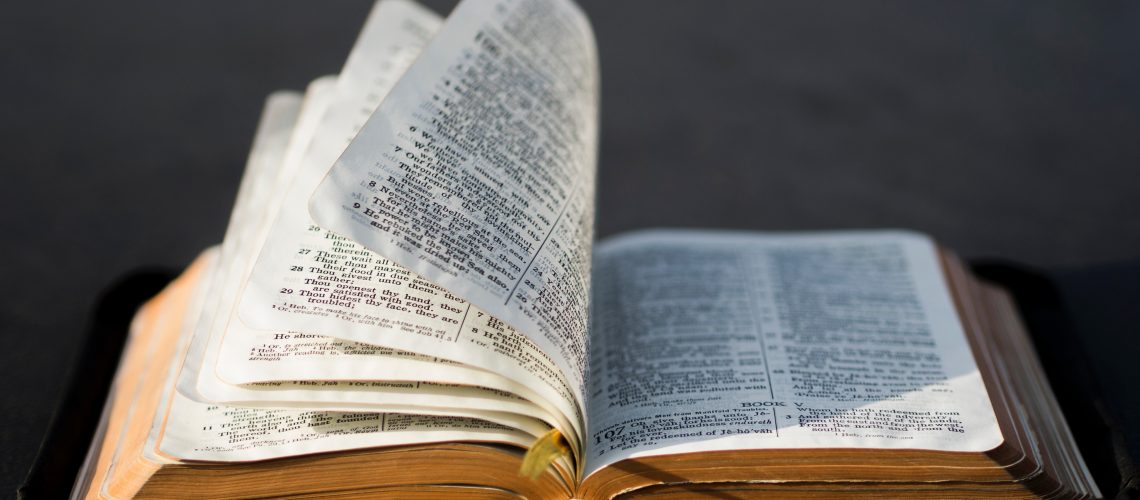Key Verse: “The next day John saw Jesus coming toward him and said, “Here is the Lamb of God, who takes away the sin of the world! 30 This is the one I told you about: ‘After me comes a man who ranks ahead of me, because he existed before me.’ 31 I didn’t know him, but I came baptizing with water so he might be revealed to Israel.” (John 1:29-31 CSB)
The day after John the Baptist encountered the priests and Levites, who had been sent from Jerusalem to try to understand his true identity, John looked up and saw Jesus coming toward him. Imagine what that would have been like. Seeing Jesus, John declared, “Here is the Lamb of God, who takes away the sin of the world. This is the one I told you about” (v.29-30a). Everything that John had been doing culminated in this moment. The One for whom John had come to be a witness was coming toward him. It was Jesus, the Lamb of God.
The Jewish people were very familiar with lambs, both through their agrarian culture and their sacrificial system. Back in Exodus 12, God had introduced the first Passover through His deliverance of the people from slavery in Egypt. They were instructed to take an unblemished lamb or a goat and put its blood on the doorposts and lintel of their houses. When the destroyer came, he would see the blood as a distinguishing mark and would pass over the door and not strike them.
Lambs were also used in the sacrificial system. Every day in the morning and at twilight, the priests would sacrifice a lamb as part of their consecration before God. God had also given very clear instructions about the sin offering to be made by the priest. Using an unblemished lamb, the priest was to place his hand on the lamb’s head and then take some of its blood and apply it to the horns of the altar of burnt offering. “In this way the priest will make atonement on his behalf for the sin he has committed, and he will be forgiven” (Leviticus 4:35b).
Why so much talk about sacrificing unblemished lambs? This was the system God had put in place to atone for the sins of the people. “Without the shedding of blood there is no forgiveness” (Hebrews 9:22). This is why John’s statement is so significant. When Jesus arrived on the scene just days before the Passover celebration, John pointed to Him as “The Lamb of God who takes away the sin of the world.”
Jesus wasn’t just another lamb. He was the Lamb, sent from God to atone for sin once and for all. This is why He had come. “He was revealed so that he might take away sins, and there is no sin in him” (1 John 3:5). “Like a lamb led to the slaughter and like a sheep silent before her shearers” (Isaiah 53:7), Jesus is the perfect, spotless Lamb, sent from God for us to make the ultimate sacrifice for our sins.
Because of this, Peter tells us that we were redeemed, “with the precious blood of Christ, like that of an unblemished and spotless lamb” (1 Peter 1:19). “God presented him,” Paul wrote, “as an atoning sacrifice in his blood, received by faith” (Romans 3:25).
Have you put your faith in Jesus Christ for the forgiveness of your sins? Can you look to the Lamb of God and say with confidence that His sacrifice has removed your sins from you? Jesus Christ is the only one who can do that. Through faith in what He did on the Cross, we can say with confidence that He is our perfect substitute, the One who has redeemed us from sin through His perfect sacrifice. Give Jesus praise and thanksgiving for all that He had done!
Prayer: Jesus, I declare that you are the Lamb of God who takes away my sin. Your blood was enough to satisfy God’s righteous demands. Your sacrifice was sufficient to atone for my sin. Thank you for your incredible love and mercy toward me. I praise you today for all that you have done! Amen.
Author: Jonathan Miller has served in pastoral roles for more than 13 years in churches in Barrie, Oakville and Burlington, Ontario. He currently serves as the Chief Operating Officer at Prison Fellowship Canada, a ministry that mobilizes and equips local churches to engage in the restorative work of prisoners, ex-prisoners, their families, and victims across Canada. Jon holds degrees from McMaster University and Trinity Evangelical Divinity School. He and his wife Adrienne have been married since 2004, and live in Burlington, Ontario with their 4 children. Jon’s greatest passion is to know Jesus and to see lives transformed by Him and for Him.




